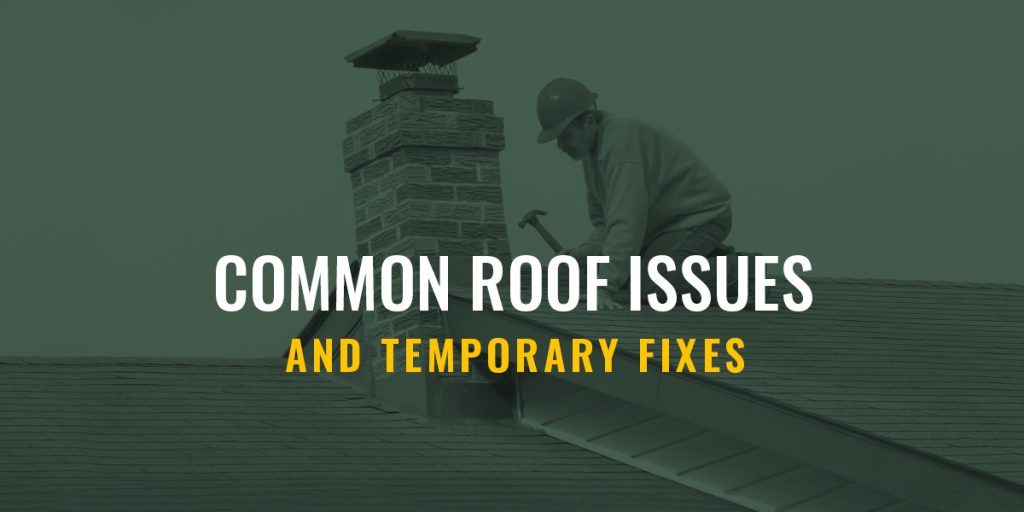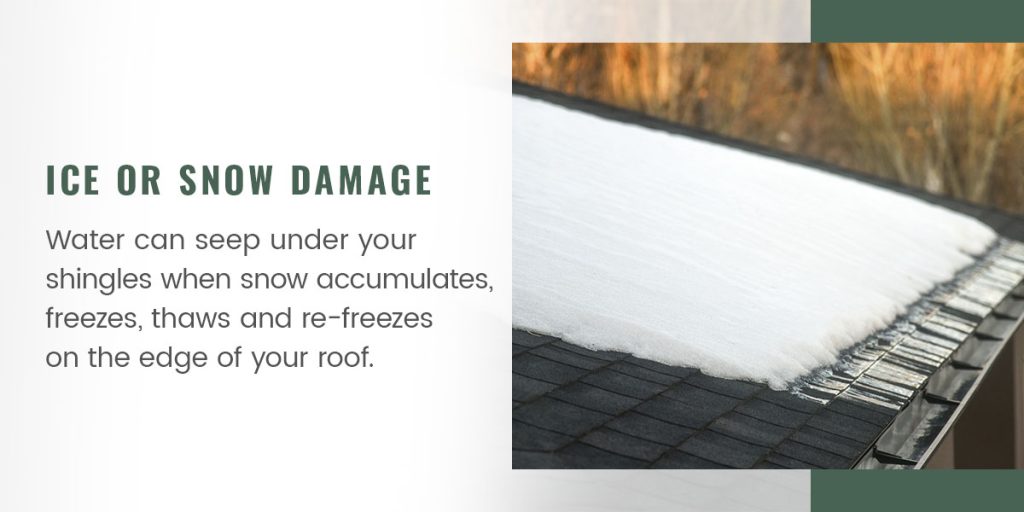
Professional attention is the best way to address roofing complications and keep your home in excellent condition, but sometimes, you need a stopgap measure while waiting for experienced service providers. Whether you need a quick fix for a roof leak or a temporary solution for damaged flashing, simple DIY repairs can preserve your roof’s structure and quality.
Proactively addressing roof complications can save you money on repairs. The following signs indicate your roof may require attention:
While a quick roof repair can temporarily prevent further damage, professional inspections and services are the most effective way to extend your roof’s life span. Consider the following complications and common roof repairs you can implement to protect your home.
Moisture on your ceiling or walls is the most evident sign of a roof leak, but you might also notice water stains or a mildew odor. Leaks can occur due to the following causes:
Immediately contact a professional if you notice signs of a leak, then avoid further damage with the following temporary fixes for a leaking roof.
Debris like leaves and twigs can gradually accumulate in your gutters, blocking water flow. Gutter cleaning prevents water from overflowing into your roof and causing structural damage or leaks.
While you can clear your gutters yourself, professionals have the skills and experience to do the job thoroughly and follow up with an inspection to ensure your roof is in top shape. You can also have technicians install screens to prevent excess debris from accumulating in your gutters.
Roof flashing is a protective material installed around areas like chimneys, vents and skylights to prevent water from seeping in and causing leaks. It directs water away from vulnerable areas and maintains structural integrity by sealing gaps and joints.
If the flashing cracks or detaches, you might notice leaks around your windows, fireplace or skylights. You should contact a professional immediately if you see flashing damage, but these interim solutions can minimize complications:
You might have roof damage if you notice buckled, shifted, curled, cracked or missing shingles. Moss or algae growth is another warning sign. The following factors can damage shingles:
You should contact roofing technicians to replace shingles, check for additional damage and restore your roof. However, you can apply roofing cement as a stopgap.
Standing water is a characteristic issue on flat roofs, but it can also occur on a slanted roof if part of its structure begins to dip or cave in, gradually leading to more severe complications. Contact a trustworthy technician to address pooling water and prevent algae, mold, rot and structural damage.
A professional can re-pitch your rooftop, fix drooping spots, replace the membrane or compress your roof’s insulation depending on its condition. You can clear debris from your drainage system and place a roof cricket over the damaged area to reduce pooling while waiting for repairs.
Moisture can collect in your home’s attic when your ventilation system works improperly, which raises your home’s internal temperature. This effect can lead to several complications:
Your roof’s ventilation may need attention if you notice signs such as excessive warmth inside your home, a humid attic, damaged shingles or peeling paint. In this case, you should schedule an inspection, ensure your vents are clear of insulation and talk to a professional about installing exhaust and intake vents.

Water can seep under your shingles when snow accumulates, freezes, thaws and re-freezes on the edge of your roof. This moisture expands and pushes your shingles upward, exposing the layer underneath. You must clear the precipitation to prevent a sheet of snow and ice from forming and harming your roof’s structure. Prevent further damage with the following solutions:
Tears or cracks in your shingles or flashing can be due to roof shrinkage. This phenomenon is more common on roofs with synthetic membranes, and it occurs when materials pull from different directions. Roof shrinkage requires professional inspection and repair, so you should contact a trusted roofing company as soon as you notice cracks or tears on your roof.
Strong winds, heavy rain and excessive snowfall can lead to storm damage. If you notice any leaks or cracks in your roof following a storm, call a roofing company to identify damage and determine the best way to resolve it.
Overhanging shrubs or trees can gradually degrade your roof, so you should ensure no greenery can touch it. Prune back large shrubbery or trees to ensure your roof is free of branches and leaves.
Bald patches occur when asphalt shingles lose their granules, exposing your roof’s surface to heat, rain and snow. You can sometimes see bald patches when they develop, but other times, they can be challenging to detect. Routine inspections can detect and address bald patches before they cause further damage.
Incorrect installation or maintenance can cause multiple roof complications. Trusting experienced professionals to install, inspect and maintain your roof is crucial and can save you significant costs on potential damage.
Choosing the best company for your roof installation, maintenance and repair needs is essential. Trusting a knowledgeable, experienced company with your roof extends its life span and save you more money over time. Total Roofing and Construction is a family-owned-and-operated business serving the Chicago area with dependable roof repair and maintenance.
Our skilled team can handle residential and commercial jobs, and we work with your insurance company to help you save money. Contact us to learn more and schedule a free inspection.